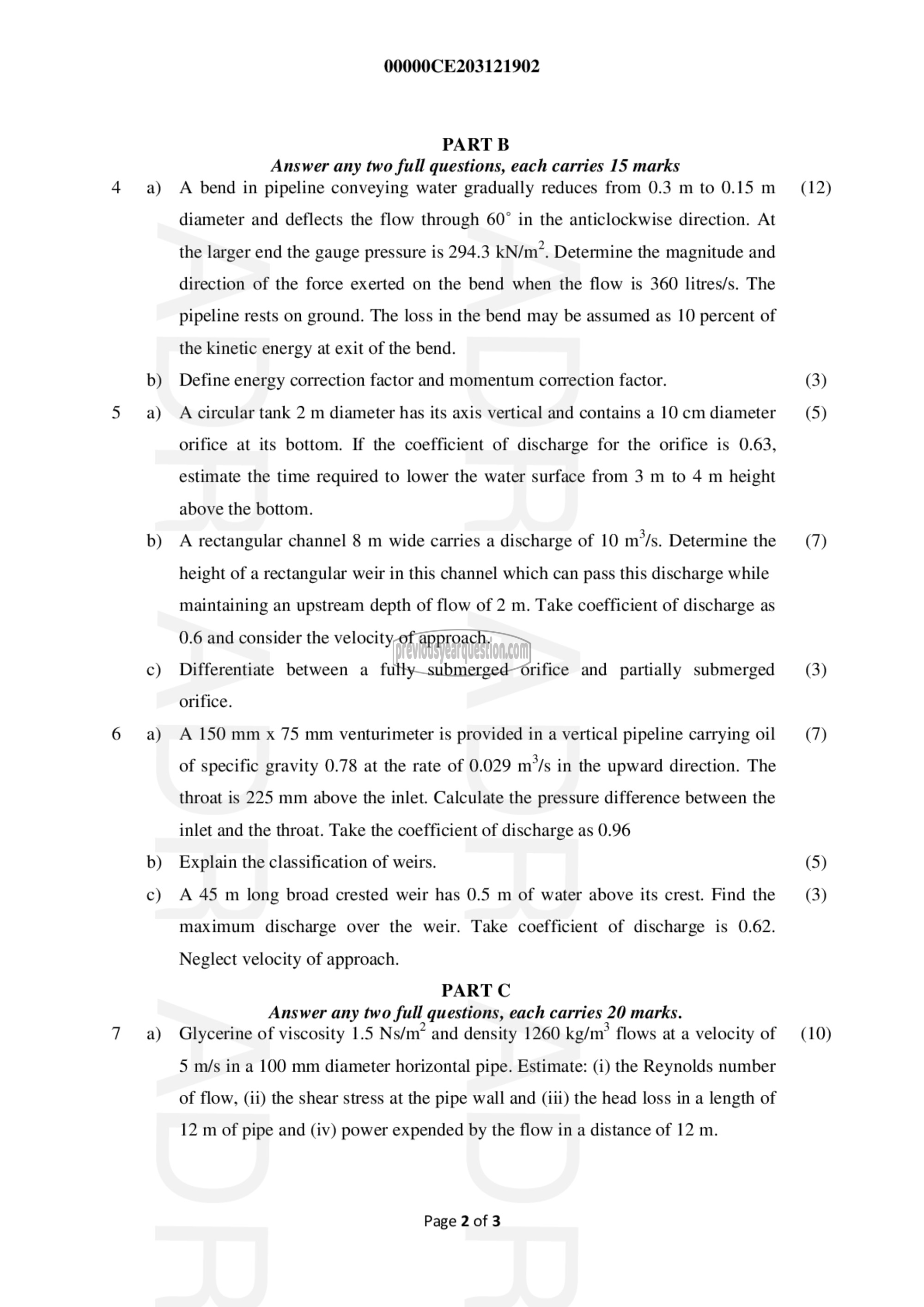APJ ABDUL KALAM TECHNOLOGICAL UNIVERSITY Previous Years Question Paper & Answer
Semester : SEMESTER 3
Subject : Fluid Mechanics– I
Year : 2020
Term : DECEMBER
Branch : CIVIL ENGINEERING
Scheme : 2015 Full Time
Course Code : CE 203
Page:2
4
a)
b)
a)
b)
௦)
a)
b)
०)
8)
00000CE203121902
PART تا
Answer any two full questions, each carries 15 marks
A bend in pipeline conveying water gradually reduces from 0.3 m to 0.15 m
diameter and deflects the flow through 60° in the anticlockwise direction. At
the larger end the gauge pressure is 294.3 അ. Determine the magnitude and
direction of the force exerted on the bend when the flow is 360 litres/s. The
pipeline rests on ground. The loss in the bend may be assumed as 10 percent of
the kinetic energy at exit of the bend.
Define energy correction factor and momentum correction factor.
A circular tank 2 m diameter has its axis vertical and contains a 10 cm diameter
orifice at its bottom. If the coefficient of discharge for the orifice is 0.63,
estimate the time required to lower the water surface from 3 m to 4 m height
above the bottom.
A rectangular channel 8 m wide carries a discharge of 10 m*/s. Determine the
height of a rectangular weir in this channel which can pass this discharge while
maintaining an upstream depth of flow of 2 m. Take coefficient of discharge as
0.6 and consider the velocity of approach.
Differentiate between a fully submerged orifice and partially submerged
orifice.
A 150 mm x 75 mm venturimeter is provided in a vertical pipeline carrying oil
of specific gravity 0.78 at the rate of 0.029 073/6 in the upward direction. The
throat is 225 mm above the inlet. Calculate the pressure difference between the
inlet and the throat. Take the coefficient of discharge as 0.96
Explain the classification of weirs.
A 45 m long broad crested weir has 0.5 m of water above its crest. Find the
maximum discharge over the weir. Take coefficient of discharge is 0.62.
Neglect velocity of approach.
PART C
Answer any two full questions, each carries 20 marks.
Glycerine of viscosity 1.5 Ns/m? and density 1260 kg/m? flows at a velocity of
5 m/s in a 100 mm diameter horizontal pipe. Estimate: (1) the Reynolds number
of flow, (ii) the shear stress at the pipe wall and (iii) the head loss in a length of
12 m of pipe and (iv) power expended by the flow in a distance of 12 m.
Page 2 of 3
(12)
(3)
(5)
(7)
(3)
(7)
(5)
(3)
(10)
